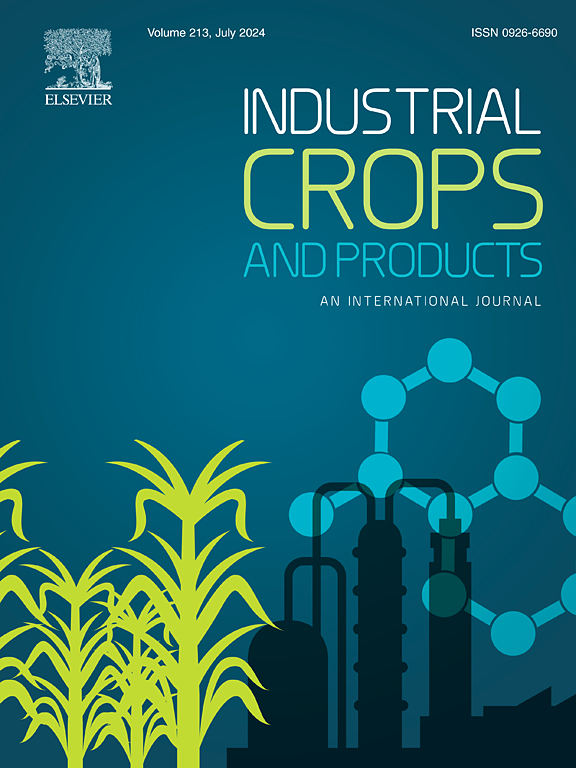通过纳米改性生漆涂层增强木材保护和可持续性:制备,性能和性能评估
IF 5.6
1区 农林科学
Q1 AGRICULTURAL ENGINEERING
引用次数: 0
摘要
生漆是一种天然高分子防腐涂料。但生漆固化时间长、耐酸碱性差、机械强度不足等缺点限制了其在涂料领域的应用。本研究以生漆为基体,采用纳米Al2O3纳米颗粒(Al2O3 NPs)和可再分散的纤维素纳米纤维(CNFs)作为纳米填料,开发了木材表面的纳米复合涂层。结果表明,复合涂层提高了木材的耐湿性和耐老化性。改性Al2O3 NP/真漆(QA)和改性CNF/真漆(QF)涂层提高了木材的硬度(6h)和光泽度。特别是,QA和qf涂层的木材分别达到了6.9和5.1 GU的光泽值。NPs的加入使QA和QF涂层的干燥时间分别比原漆(Q)涂层缩短27.8% %和66.7 %。扫描电镜和傅里叶变换红外分析证实,NP的加入促进了漆膜的聚合。因此,QA和qf涂层木材比q涂层木材表现出更高的耐湿性和抗老化性,分别降低了13.73 %和6.6 %的吸水率。在潮湿环境中,涂有qf涂层的木材表现出最高的尺寸稳定性。此外,涂有qa涂层的木材表面具有最高的抗紫外线变色能力,其抗老化能力提高了37.07 %。本研究为提高生漆作为木器涂料的户外性能提供了一种绿色、简单的方法。本文章由计算机程序翻译,如有差异,请以英文原文为准。
Enhanced wood protection and sustainability via nano-modified raw lacquer coatings: Preparation, properties, and performance evaluation
Raw lacquer is a natural polymer-based anticorrosive coating. However, the long curing time, poor acid and alkali resistance, and insufficient mechanical strength of raw lacquer limit its application in the coating field. In this study, nanocomposite coatings for wood surfaces were developed using raw lacquer as the matrix, which incorporated nano-Al2O3 nanoparticles (Al2O3 NPs) and redispersible cellulose nanofibers (CNFs) as nanofillers. The results revealed that the composite coating improved the moisture resistance and aging resistance of wood. The modified Al2O3 NP/lacquer (QA) and modified CNF/lacquer (QF) coatings improved the hardness (6 H) and gloss of the wood. Particularly, the QA- and QF-coated wood achieved gloss values of 6.9 and 5.1 GU, respectively. The addition of NPs reduced the drying time of QA and QF coatings by 27.8 % and 66.7 %, respectively, compared with raw lacquer (Q) coating. Scanning electron microscopy and Fourier-transform infrared analysis confirmed that NP incorporation enhanced the polymerization of the paint film. Consequently, QA- and QF-coated wood exhibited higher moisture and aging resistance than Q-coated wood, which reduced water absorption rates by 13.73 % and 6.6 %, respectively. In a humid environment, QF-coated wood exhibited the highest dimensional stability. Moreover, the QA-coated wood surface exhibited the highest resistance to UV-induced discoloration, with a 37.07 % improvement in aging resistance. This study provides a green and simple approach for improving the outdoor performance of raw lacquer as a wood coating.
求助全文
通过发布文献求助,成功后即可免费获取论文全文。
去求助
来源期刊

Industrial Crops and Products
农林科学-农业工程
CiteScore
9.50
自引率
8.50%
发文量
1518
审稿时长
43 days
期刊介绍:
Industrial Crops and Products is an International Journal publishing academic and industrial research on industrial (defined as non-food/non-feed) crops and products. Papers concern both crop-oriented and bio-based materials from crops-oriented research, and should be of interest to an international audience, hypothesis driven, and where comparisons are made statistics performed.
 求助内容:
求助内容: 应助结果提醒方式:
应助结果提醒方式:


